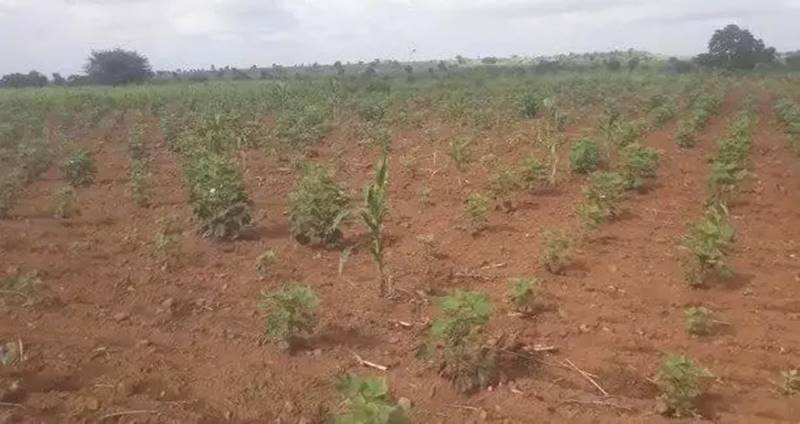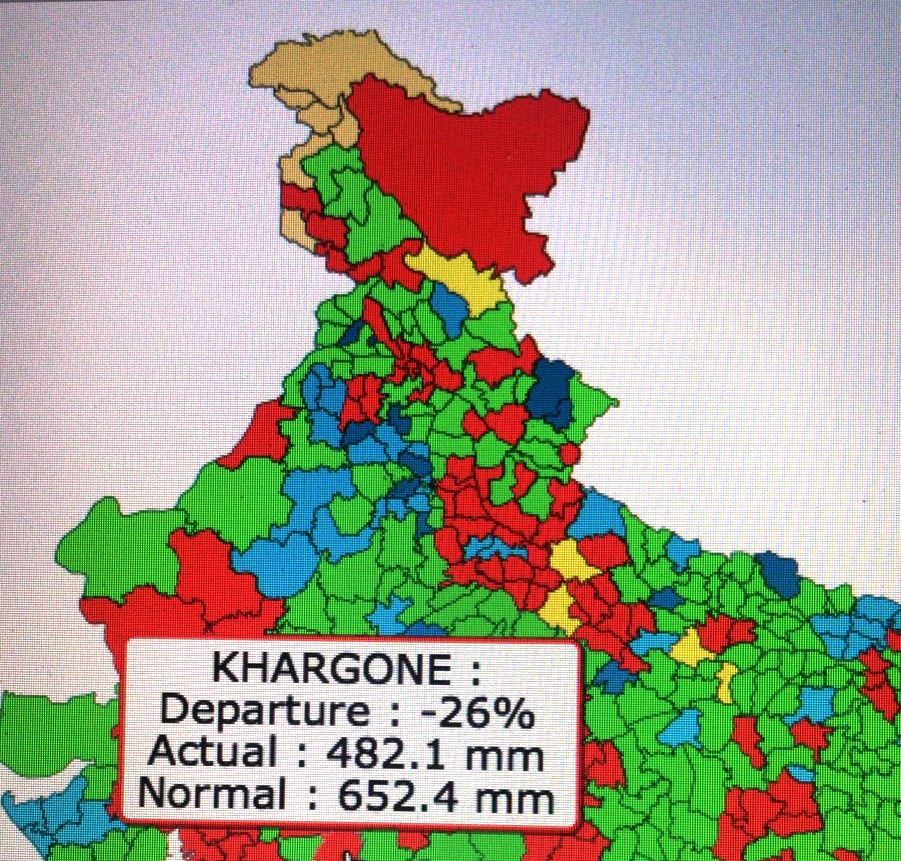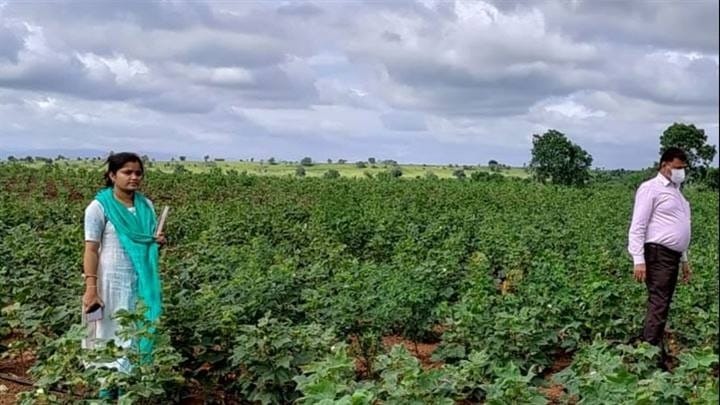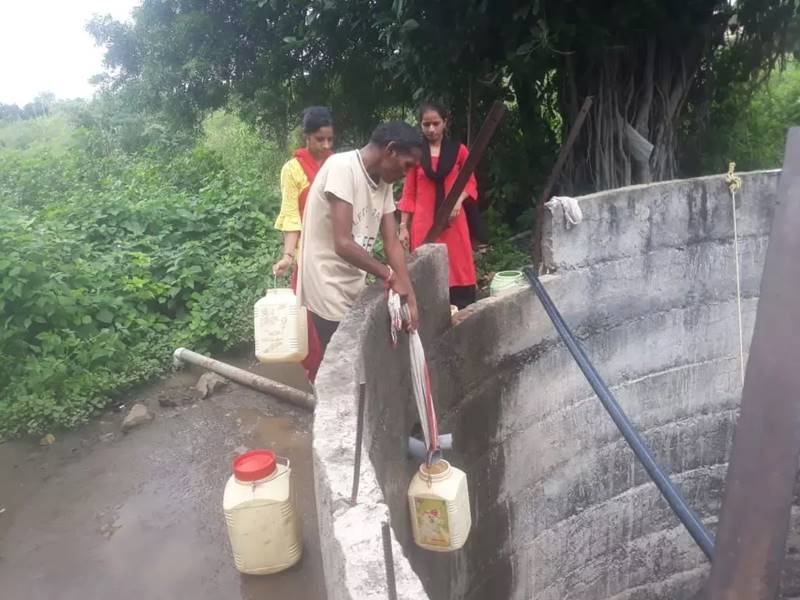Suicide by a young farmer in Khargone shines a spotlight on the farming crisis
Debts, poor rainfall and a failing crop was more than what farmer Jitendra Patidar, from Pandhaniya village in Madhya Pradesh, could face and he died by suicide. Other farmers in the region warn of the drought that looms large over the region.

Pandhaniya (Khargone), Madhya Pradesh
In a sickeningly familiar incident, a 37-year-old farmer died by suicide, on September 10, unable to cope with his debts, and the fact that his crops had all failed due to below normal rainfall. Jitendra Patidar owned 6.5 hectares (ha) of land in Pandhaniya village in Khargone district, 230 kms away from the state capital Bhopal. He had cultivated cotton on four hectares, green chillies in over one hectare and groundnuts in the balance land.
Jitendra’s family claimed inadequate rainfall, poor crop yield and his mounting debts led to his death, but the state government was unwilling to accept that as the reason and insisted his death had nothing to do with his agricultural debt incurred as a result of inadequate rainfall.
Also Read: Debt and natural calamity push Bundelkhand’s farmers to the brink
“Jitendra’s land was in the name of his wife, mother and grandmother, and he had incurred a loan of more than ten lakh rupees from several societies, banks and moneylenders,” Bhagwan Patidar, Jitendra’s uncle told Gaon Connection.
“Even last year he suffered similar losses. And he was very disturbed,” said Bhagwan, who was perhaps the last person Jitendra spoke to before he died. Jitendra is survived by his 35-year-old wife Sarika Patidar, his 15 and 13 year old sons, Pranchal and Gautam, his mother Chandubai and his grandmother Genda bai.

A fay after the farmer’s death, Khargone district authorities reached Padhaniya to investigate and, in a statement to the media, Satendra Singh, the sub-divisional magistrate said: “From the details of the first report on farmer Jitendra Patidar’s death, it seems unlikely that the suicide was because of his debts. According to the reports, his cotton crop on his ten acres of land seemed normal, and the loan he had taken from the government society was ninety thousand six hundred and seventy one rupees.”
The sub-divisional magistrate, however, said that the chillies and groundnut crops were not in a good shape.

Jitendra’s death has once again brought to the fore the extremely disturbing issue of farmers’ suicides in India. In its report released last year, the National Crime Records Bureau (NCRB) pointed out that as many as 42,480 farmers and daily wagers committed suicide in 2019, an increase of about 6 per cent from the previous year.
The NCRB report said that 10,281 farmers had died by suicide in 2019. Although this was down from 10,357 in 2018, farmer suicide remains a burning issue in the country as mounting cost of production, poor crop rate, erratic rainfall patterns and climate change have made farming a gamble.
Also Read: Daily wage earners dying of suicide jump from 18% to 24% in the last five years: NCRB
Incidentally, the day Jitendra took his own life, the National Statistical Office (NSO) under the Ministry of Statistics and Programme Implementation released its data on agricultural households in India which pointed out that 52 per cent farming families in the country are in debt, and the average debt is Rs 74,121. There are approximately 93 million farmer families in the country.
Poor rainfall adds to farmers’ woes
According to data from the India Meteorological Department, from June 1 to September 15 this year, Khargone district received 482.1 mm of rain as against its normal rainfall of 652.4 mm – a deficiency of minus 26 per cent. Because of deficient rainfall, several farmers in Khargone have reportedly suffered heavy crop losses.

“Not just in Pandhaniya, the farmers of nearly twenty villages nearby are facing the same troubles Jitendra did. Lack of water has led to the cotton not growing to its full height,” Harish Patidar, a resident of Pandhaniya, told Gaon Connection.
Jitendra’s kin as well as several farmers from in and around Pardhaniya are not happy that the authorities stated the deceased farmer’s cotton crop was ‘normal’.
“If this cotton crop looks ‘normal’ to the authorities, they should sell it and give the farmers their due,” Harish said. ”In the space of two and a half months, the cotton crop should have grown to four or five feet. But because of inadequate rainfall, the crop is not even three feet tall. Some have remained at no more than half a foot,” the 49-year-old farmer pointed out.
Speaking about the yield of cotton, Pawan Patel, a 35-year-old farmer from Chalpa, a neighbouring village of Pandhaniya, told Gaon Connection: “If the crop is healthy we should get about eight to ten quintals of cotton from an acre of land and we can earn about forty five thousand to fifty three thousand rupees per acre.”
“But, in the last couple of years we have managed to get only two to three quintals on an average per acre,” complained Patel. “Some have not even been able to get that much,” he said.
“If it continues like this for a few more years, the cotton belt of Nimar in Madhya Pradesh will become another Vidarbha of Maharashtra,” the 35-year-old farmer warned.
“The debts are mounting and the cotton yields are falling. In as many as twenty villages here, it is a drought-like condition,” Patel added. This despite the fact that in some other parts of the state, there were severe floods.
Chillies crop hit too
Khargone and Badhwani in Madhya Pradesh are considered the hub of green chillies. But, last year the crops were struck down by disease in many places, or by drought in some others. In places where the crop flourished, the market price let the farmers down.
The chillies in Jitendra’s farm had not done well. “The chilli plants were underdeveloped and there were no chillies on them,” Parvat Singh Badola, senior horticulture development officer of Khargone, who had come to inspect Jitendra’s farm, told Gaon Connection. “Even last year this area was affected by a virus that destroyed the crop of green chillies,” he added.

Also Read: Green chilli farmers in the red
“For the past few years we have constantly borne losses due to our chillies and cotton crops not doing well,” Harish, a farmer from Pandhaniya, told Gaon Connection. According to him, it was difficult to even recover the cost of growing them. “In 2019-20, farmers lost their cotton crops to diseases, and this year it is the lack of rain that is destroying the crops,” he rued.
“The cost of cotton and green chillies cultivation is going up every year,” Sunil Patidar from Pandhaniya told Gaon Connection. “The cost of growing cotton on one acre of land is anything between twenty five and thirty thousand rupees, but the returns are next to nothing,” he said.
“Similarly chilli cultivation costs between eighty thousand rupees and a lakh and a half rupees. And we have had no profits from that crop either,” Sunil, the 25-year-old farmer, said despondently.
Also Read: Chillies that were in demand as far as in the Middle East are not even getting the local buyers

Drought approaching?
Farmers in Khargone claim they are heading into a drought due to poor rainfall this monsoon season.
“So far no one from the state government has thought it necessary to visit the drought-hit villages. Most of the villages here are struggling to even get drinking water; people are trudging eight kilometres to fetch water,” 36-year-old Gopal Patidar from Pandhaniya, told Gaon Connection, as he reeled off the names of the villages that were drought-hit.
“There is no irrigation facility in the twenty odd villages in this region,” Gopal Patidar pointed out to Gaon Connection. “Narmada flows approximately thirty five kilometres away, but there have been no schemes to help us combat drought. And nothing came of the ideas for schemes that were bandied about, ” he added.
Also Read: Large-scale deficient monsoon rainfall across Odisha triggers fear of drought
During his site visit on September 11, the sub-district magistrate admitted there had been less rain in Khargone when compared to last year. As against 700 mm rain, the district has received only over 400 mm, he told the media.
“But in the last fifteen days there has been intermittent rainfall which has helped the crops,” the sub-divisional magistrate Satendra Singh said. “If it continues this way for another week, there will be no drought,” he said.
The Madhya Pradesh government has declared its intention of digging 250,000 wells and 500,000 ponds in the state by 2030. But farmers from the villages in Khargone district said they had seen nothing on the ground yet being done to execute those plans. Meanwhile their expenses are mounting, they said.
“Expenses went up as we had to replace the drip irrigation set up,” Pawan Patel said. “The government does give a subsidy on setting it up, but the farmer ends up spending about seventy thousand rupees an acre on it. The drip goes bad after three years and needs to be replaced,” the farmer explained. “Some farmers are yet to receive the subsidy. Those of us who received it once, have not got it the second time,” he said.
Read the story in Hindi.

